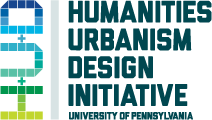Eugenie Birch, co-director of the Humanities, Urbanism and Design (H+U+D) Initiative as well as the University of Pennsylvania’s Institute for Urban Research and the , has been elected as the first president of the new General Assembly of Partners (GAP), a special initiative of the United Nation’s World Urban Campaign. Birch was elected at the GAP’s inaugural meeting, held in Nairobi, Kenya in mid-April. At the same meeting, New Delhi’s Shipra Narang Suri, Vice President of the International Society of City and Regional Planners, was elected as GAP’s vice president.
The General Assembly of Partners is a new global initiative that will play an important role in the preparation process for the United Nation’s Habitat III conference, the world’s premier conference addressing urban issues, to be held in Quito, Ecuador in October 2016. Through a process of engaging groups of diverse of stakeholders— including city policymakers, organized groups of women, academics, indigenous peoples, foundations, farmers, and the media—GAP will seek to identify and address new and emerging urban challenges in advance of the Habitat III conference.
GAP has identified 14 “partner constituent groups” to engage in this process, most of whom have elected chairs and will be electing co-chairs at the GAP’s upcoming October meeting.
“Habitat III is about creating a vision and plan for the future of urban communities around the world,” says Birch. “In order to really understand the depths and nuances of urban issues, we must bring together the diverse constituents who have a stake in making cities better, stronger, and more livable in the 21stcentury. And that’s exactly what the new General Assembly of Partners hopes to do.”
In her role as GAP’s president, Birch, with the help of the United Nations Division of Economic and Social Affairs Major Group Programme Manager, is launching a wide-ranging engagement effort to bring together members from the 14 major constituent groups, and beyond. The GAP will work with these members to engage in dialogue, propose actionable recommendations, and publicize outcomes and collective positions to the Habitat III conference.









